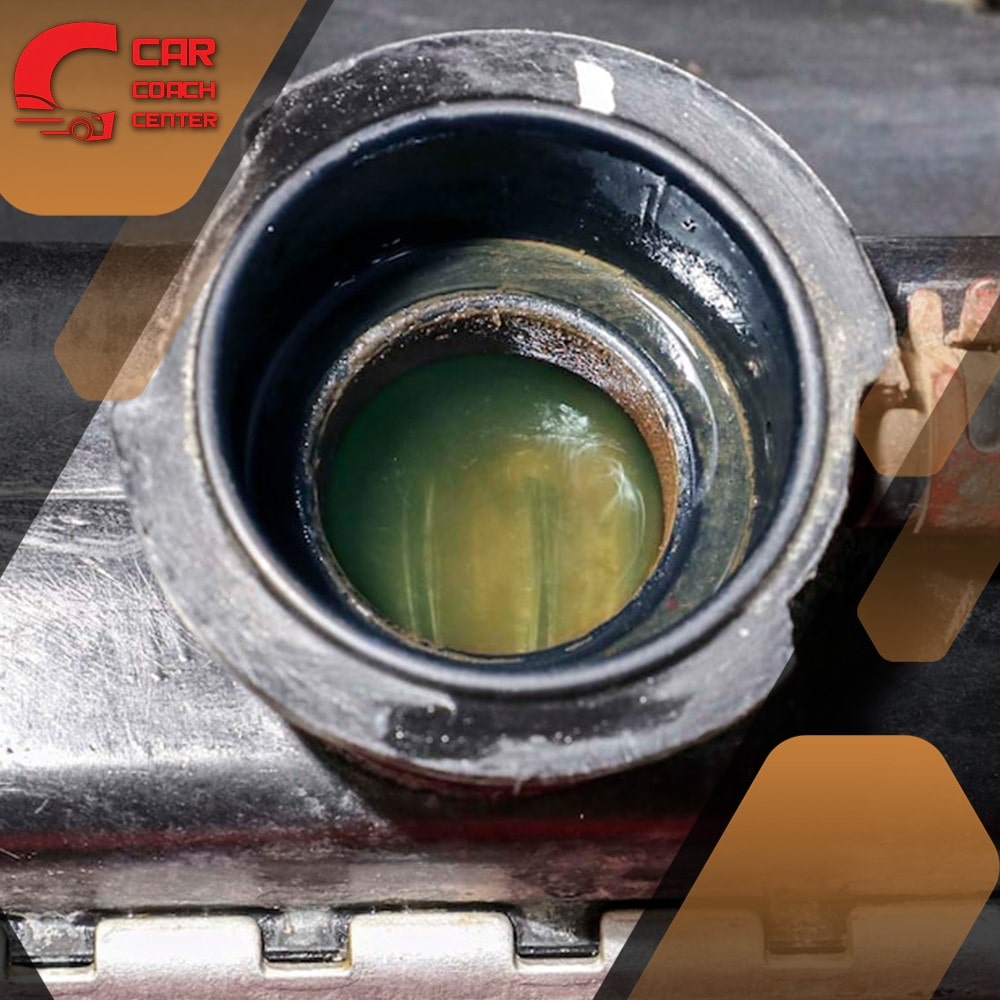Can You Drive With A Bad Thermostat
Your vehicle’s thermostat might seem small and inconspicuous, but maintaining your engine’s optimal temperature is crucial. However, what happens when your thermostat malfunctions? Can you continue driving with a bad thermostat or address the issue immediately? This article will explore the world of thermostats and their impact on your vehicle’s performance and longevity.
We’ll explore the symptoms and warning signs that indicate a malfunctioning thermostat, discuss the risks associated with driving with a faulty thermostat, and provide insights into potential solutions. Whether you’re a car enthusiast or a novice driver, understanding the consequences and appropriate actions when faced with a bad thermostat will help you make informed decisions about your vehicle’s maintenance and safety.
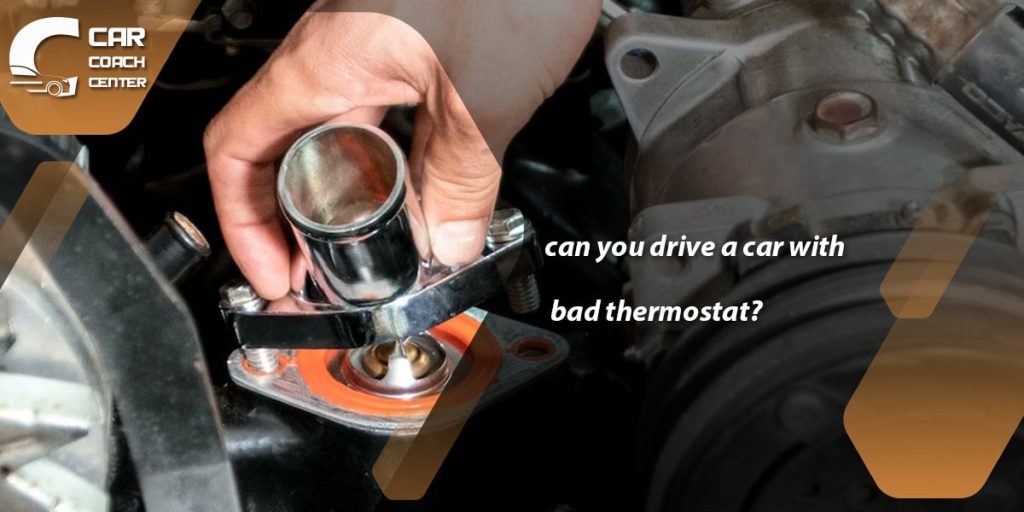
So, let’s buckle up and embark on a journey to uncover the truth about driving with a malfunctioning thermostat and discover the best action to keep your engine running smoothly.
Symptoms and Warning Signs: How to Spot a Bad Thermostat
Your vehicle’s thermostat plays a crucial role in regulating the engine’s temperature and ensuring efficient operation. When the thermostat starts to malfunction, it can lead to a range of issues that may affect your driving experience and the overall health of your vehicle. By recognizing the symptoms and warning signs of a bad thermostat, you can address the problem before it escalates. Here are some key indicators to look out for:
Fluctuating Temperature Gauge
One of the most common signs of a faulty thermostat is a temperature gauge that fluctuates between hot and cold. If you notice sudden spikes or drops in the gauge’s reading, likely, the thermostat is not opening or closing properly.
Overheating Engine
A malfunctioning thermostat can disrupt the coolant flow, leading to overheating. Observing the temperature gauge consistently reaching the red zone or seeing steam coming from under the hood indicates a problem that needs attention.
Poor Fuel Efficiency
A bad thermostat can affect your vehicle’s fuel efficiency. If you notice a significant decrease in miles per gallon (MPG) or visit the gas station more frequently, it’s worth considering a faulty thermostat as a potential cause.
Coolant Leaks
Leaking coolant often indicates a failing thermostat. Keep an eye out for puddles or stains of coolant beneath your parked vehicle. Additionally, a noticeable decrease in coolant levels over time may indicate a problem.
Heater Issues
A malfunctioning thermostat can also affect the performance of your vehicle’s heater. If you experience inconsistent heating inside the cabin, such as the heater blowing cold air when it should be warm, it could be a symptom of a faulty thermostat.
Check Engine Light
A failing thermostat may sometimes trigger the check engine light on your dashboard. Although this indicator can signify various issues, a professional must diagnose the vehicle to determine if the thermostat is the underlying cause.
Understanding the Thermostat’s Role in Your Car’s Cooling System
Your vehicle’s cooling system plays a vital role in maintaining the engine’s optimal temperature, and at the heart of this system lies the thermostat. While the thermostat may seem like a small component, its function is critical for your car’s overall health and performance. Let’s take a closer look at the role of the thermostat in your vehicle’s cooling system.
The primary purpose of the thermostat is to regulate the flow of coolant through the engine. It acts as a valve, opening and closing to control coolant circulation based on the engine’s temperature. When the engine is cold, the thermostat remains closed, preventing coolant from circulating and allowing the engine to warm up quickly. Once the engine reaches its operating temperature, the thermostat opens, allowing coolant to flow through the radiator, dissipating heat, and keeping the engine temperature within the desired range.
The thermostat works in conjunction with other components of the cooling system, such as the water pump, radiator, and cooling fan, to maintain the engine’s temperature. The thermostat helps prevent overheating, excessive wear and tear, and potential engine damage by ensuring the engine stays within the optimal temperature range.
In addition to regulating the engine’s temperature, the thermostat also aids in achieving efficient fuel combustion. It helps the engine reach its optimal operating temperature, ensuring the fuel is burned efficiently and reducing emissions. This not only improves fuel efficiency but also reduces environmental impact.
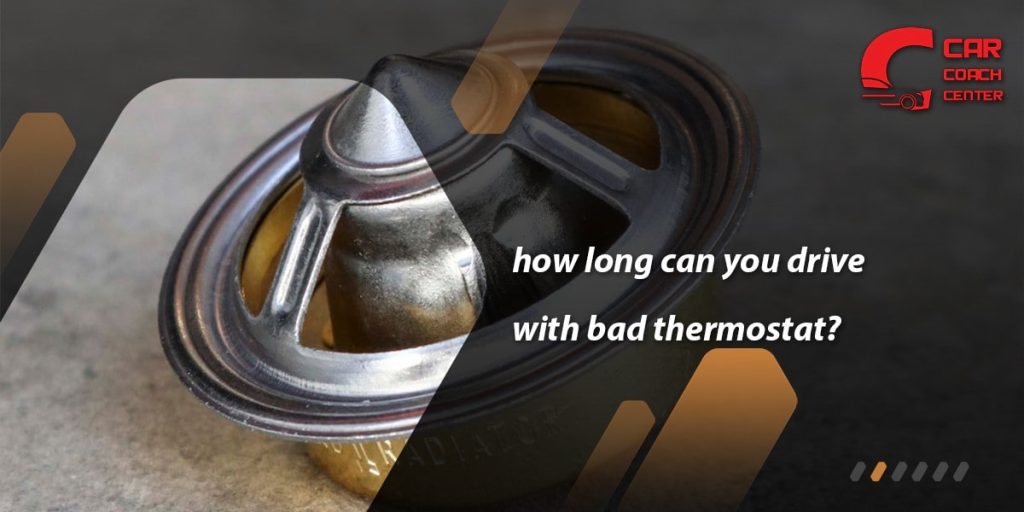
Potential Risks of Driving with a Faulty Thermostat
Driving with a faulty thermostat can pose significant risks to your vehicle and your safety. Ignoring or neglecting a malfunctioning thermostat can lead to various consequences that can escalate if left unaddressed. Let’s explore some of the potential risks associated with driving with a faulty thermostat:
Engine Damage
One of the most serious risks of driving with a malfunctioning thermostat is engine damage. If the thermostat fails to open at the correct temperature or remains stuck open or closed, it can disrupt the engine’s cooling system. This can result in overheating, which may cause severe damage to engine components such as the cylinder head, gaskets, pistons, or even the entire engine block.
Decreased Performance
A faulty thermostat can affect your vehicle’s performance in several ways. The engine may not reach its optimal operating temperature, reducing fuel combustion efficiency and power output. This can result in sluggish acceleration, decreased overall performance, and poor fuel economy.
Increased Emissions
A malfunctioning thermostat can disrupt the engine’s temperature regulation, leading to inefficient fuel combustion. Incomplete combustion can increase emissions of harmful pollutants such as carbon monoxide (CO), nitrogen oxides (NOx), and hydrocarbons (HC). Driving with a faulty thermostat can contribute to environmental pollution and may even cause your vehicle to fail emissions tests.
Safety Hazards
Engine overheating caused by a malfunctioning thermostat can create safety hazards on the road. If the engine temperature becomes excessively high, it can lead to sudden breakdowns, loss of power, or even engine fires. These situations can be dangerous, especially if they occur in heavy traffic or on highways, potentially putting you and other motorists at risk.
Expensive Repairs
Neglecting a faulty thermostat can result in more extensive damage to the engine and cooling system, leading to costly repairs or even engine replacement. Resolving the issue promptly by replacing the thermostat is a relatively simple and affordable fix compared to the potential expenses associated with major engine repairs.
Towing and Stranded Situations
A malfunctioning thermostat can cause sudden overheating episodes, leaving you stranded on the side of the road and requiring towing assistance. Not only can this be inconvenient, but it may also result in additional expenses and delays.
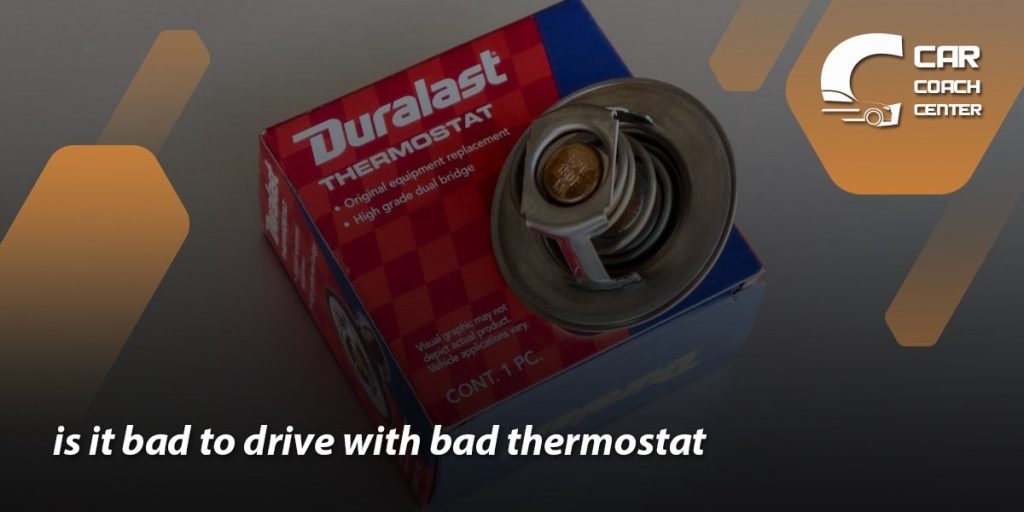
DIY vs. Professional Repair: Fixing a Bad Thermostat
When faced with a bad thermostat in your vehicle, you have two options: tackle the repair yourself (DIY) or seek professional assistance. Each approach has its advantages and considerations. Let’s explore the factors to consider when deciding between a DIY repair or relying on a professional mechanic.
DIY Repair
Cost Savings
One of the main reasons people opt for a DIY repair is to save money. Replacing a thermostat is generally a straightforward task that requires minimal tools and parts. By taking the DIY route, you can avoid labor costs associated with professional repairs.
Learning Opportunity
DIY repairs can offer a valuable learning experience. If you enjoy working on your vehicle and have some basic mechanical knowledge, replacing a thermostat can provide an opportunity to expand your skills and gain a better understanding of your car’s cooling system.
Convenience
DIY repairs can be convenient for those with the necessary tools and time. You can choose when and where to perform the repair, eliminating the need for scheduling appointments or waiting for the availability of a professional.
Considerations for DIY Repair
– Technical Skill: Replacing a thermostat may be relatively simple, but it still requires some technical know-how. Ensure you have the tools, resources, and instructions to complete the repair correctly. If you need more certainty or are uncomfortable working on your vehicle’s cooling system, it’s best to seek professional help.
Warranty Concerns
Performing a DIY repair may void the warranty if your vehicle is under warranty. Review your warranty terms and consider the potential implications before proceeding with a DIY repair.
Professional Repair
Expertise and Experience
Professional mechanics have the knowledge, experience, and specialized tools to diagnose and repair thermostat issues accurately. They can ensure that the replacement thermostat is the correct fit and that the cooling system functions optimally.
Time and Efficiency
For individuals with busy schedules or limited mechanical experience, professional repair offers convenience and saves time. Mechanics can swiftly diagnose the problem, provide expert advice, and efficiently replace the thermostat, reducing your vehicle’s downtime.
Warranty Protection
If your vehicle is under warranty, having a professional handle the repair ensures that the work is performed according to manufacturer guidelines. This protects your warranty coverage and may offer peace of mind regarding the quality of the repair.
Considerations for Professional Repair
Cost
Professional repair services involve labor costs, which can vary depending on the repair’s location and complexity. Consider your budget and the potential savings of a DIY repair when evaluating the cost-effectiveness of professional services.
Trust and Reputation
When selecting a professional mechanic or repair shop, choosing a trusted and reputable establishment is essential. Review reviews, seek recommendations, and ensure the technician or shop has experience working on your vehicle’s make and model.
Preventive Maintenance: Tips to Keep Your Thermostat Healthy
Maintaining a healthy thermostat is essential for properly functioning your vehicle’s cooling system. With regular preventive maintenance, you can prolong the lifespan of your thermostat and prevent potential issues down the road. Here are some tips to keep your thermostat in optimal condition:
Follow Manufacturer’s Guidelines
Consult your vehicle’s owner’s manual for specific guidelines and recommendations regarding thermostat maintenance. The manual will provide insights into the recommended maintenance intervals and any specific requirements for your particular vehicle.
Coolant Flush and Replacement
Regular coolant flushes and replacements are crucial for the overall health of your cooling system, including the thermostat. Over time, coolant can become contaminated with debris, rust, or other contaminants that hinder thermostat performance. Follow the recommended intervals to flush and replace the coolant, ensuring a clean and efficient cooling system.
Inspect and Clean the Thermostat Housing
Inspect the thermostat housing for any signs of corrosion, buildup, or leaks. Clean the housing using a soft cloth or a mild cleaning solution to remove debris or residue. This helps maintain proper contact between the thermostat and the housing, ensuring accurate temperature regulation.
Check Coolant Levels
Regularly monitor the coolant levels in your vehicle’s reservoir or radiator. Ensure that the coolant is appropriate, as the manufacturer indicates. Low coolant levels can impact the thermostat’s performance and lead to overheating issues.
Inspect Hoses and Connections
Check the coolant hoses and connections around the thermostat for any signs of leaks, cracks, or damage. Damaged hoses or loose connections can lead to coolant leaks, which can affect the thermostat’s functionality. Replace any worn-out hoses or tighten loose connections as necessary.
Routine Vehicle Maintenance
Following a comprehensive routine maintenance schedule for your vehicle is crucial for overall performance and longevity. Regularly scheduled maintenance, including oil changes, air filter replacements, and inspections, helps ensure that all components, including the thermostat, function optimally.
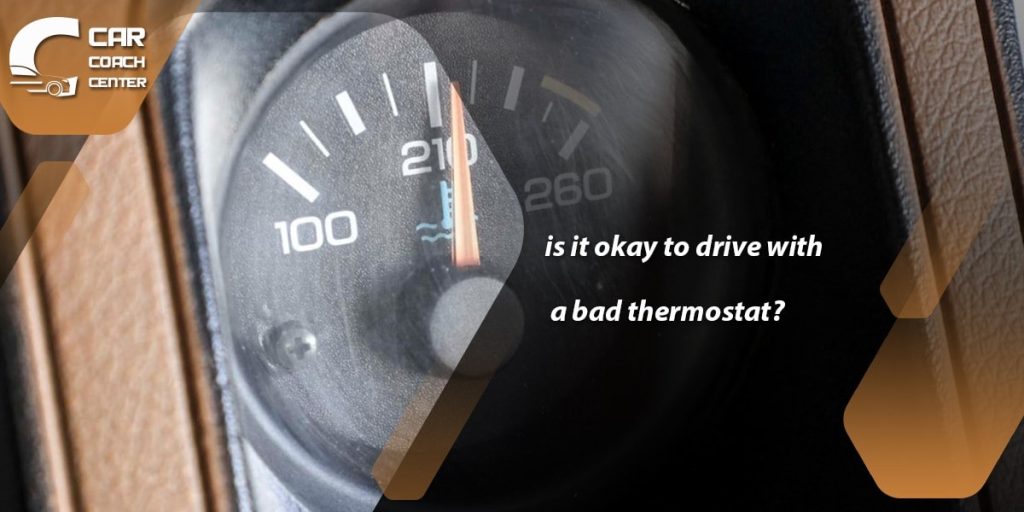
When to Seek Immediate Assistance: Emergency Situations
While it’s important to address thermostat issues promptly, certain situations may require immediate attention from a professional. Recognizing these emergency scenarios can help you prevent further damage to your vehicle and ensure your safety on the road. Here are some instances when you should seek immediate assistance for thermostat-related problems:
Severe Overheating
If your engine temperature gauge rapidly rises into the red zone or if you notice steam coming from under the hood, it indicates severe overheating. Continuing to drive in this condition can cause significant damage to the engine. Pull to a safe location immediately, turn off the engine, and contact a towing service or a professional mechanic.
Coolant Leaks
Coolant leaks can result from a malfunctioning thermostat or other cooling system issues. If you notice a sudden loss of coolant or observe puddles of coolant beneath your vehicle, it’s crucial to address the issue promptly. Operating your vehicle with low coolant levels can lead to engine overheating and potential damage. Refrain from driving and contact a professional to diagnose and repair the coolant leak.
Persistent Engine Issues
If your vehicle experiences consistent engine performance problems, such as frequent stalling, rough idling, or a significant decrease in power, it may be related to a malfunctioning thermostat. These issues can affect the engine’s ability to operate efficiently and may indicate a more significant underlying problem. Seeking immediate assistance from a qualified mechanic is essential to prevent further damage and potential safety hazards.
Dashboard Warning Lights
Certain dashboard warning lights, such as the check engine or temperature warning lights, can indicate thermostat-related issues. These lights are designed to alert you to potential problems with your vehicle. If any warning lights illuminate, especially in conjunction with symptoms like overheating or coolant leaks, a professional must inspect your vehicle as soon as possible.
Smoky or Burning Odors
If you notice a smoky or burning odor from your engine compartment, it could be a sign of overheating or other cooling system problems. Continuing to drive in this condition can lead to engine fires or other serious safety hazards. Pull over safely, turn off the engine, and contact emergency services.
conclusion
In conclusion, understanding the implications of driving with a bad thermostat is vital for your vehicle’s well-being and safety on the road. Recognizing the symptoms and warning signs, such as fluctuating temperature gauges and poor fuel efficiency, can prompt you to take timely action.
Whether you pursue a DIY repair or seek professional assistance, prioritizing preventive maintenance is essential in keeping your thermostat and cooling system healthy. Regular coolant flushes, inspections, and addressing issues promptly can go a long way in preventing costly repairs and potential risks.
By visiting carcouchcenter.com, you can access further resources and expert advice on maintaining your vehicle’s thermostat and other essential components. Remember, a well-functioning thermostat contributes to optimal engine performance, fuel efficiency, and a smooth driving experience, so don’t overlook its importance in keeping your vehicle running at its best.
Can I drive with a bad thermostat?
Driving with a bad thermostat is not recommended, as it can lead to engine overheating, decreased performance, and potential damage.
How do I know if my thermostat is bad?
Signs of a bad thermostat include fluctuating temperature gauges, engine overheating, poor fuel efficiency, coolant leaks, and heater issues.
Can I replace the thermostat myself?
Yes, it is possible to replace the thermostat yourself if you have some mechanical knowledge and the necessary tools.

